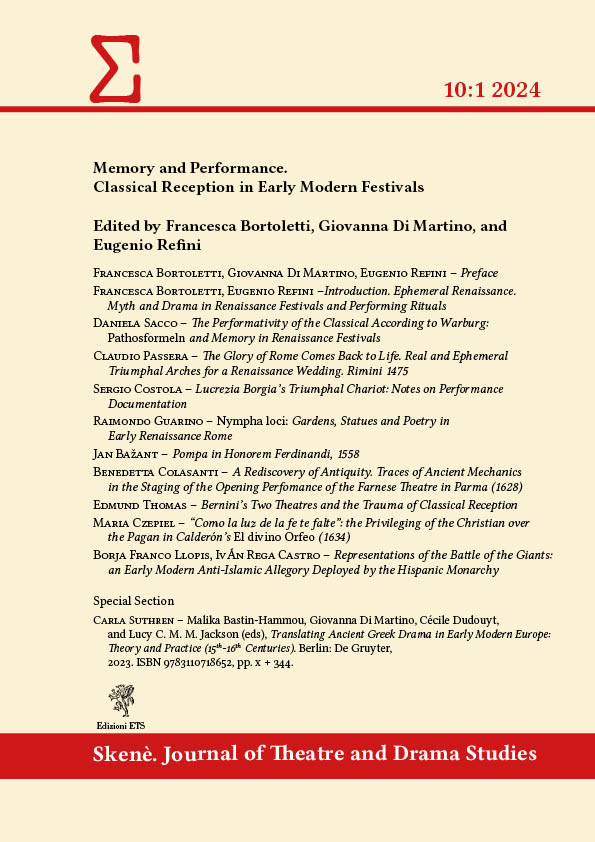Francesco Marroni. George Bernard Shaw. Commediografo e saltimbanco
DOI:
https://doi.org/10.13136/wtg3rm43Abstract
This review summarises and comments on Francesco Marroni’s volume George Bernard Shaw. Commediografo e saltimbanco (2023), analysing it chapter by chapter on the basis of the author’s vast knowledge of the Irish dramatist and thinker, especially of the multiple writings accompanying his major works, which constitute a rarely studied territory. In the book, Marroni regards his object with a disenchanted gaze, which allows him to speak of G.B.S. objectively, that is, also underlining Shaw’s flaws and errors, especially those concerning the dramatist’s political choices. In the end, Marroni stresses the impossibility to define G.B.S. with just one epithet, given the multi-faceted personality of an author who lived so long, changing his mind on various occasions, but always striving to convince his readers and audience of the righteousness of his own positions.
Keywords: George Bernard Shaw; John Bunyan; Thomas Carlyle; Charles Dickens; Henrik Ibsen; Max Nordau; John Osborne
Downloads
Published
Issue
Section
License
Copyright (c) 2024 Skenè. Journal of Theatre and Drama Studies

This work is licensed under a Creative Commons Attribution 4.0 International License.
Open Access Policy
This journal provides immediate open access to its content on the principle that making research freely available to the public supports a greater global exchange of knowledge.
This Journal is a CC-BY 4.0 publication (https://creativecommons.org/licenses/by/4.0/). This Licence allows others to share the work with an acknowledgement of the work’s authorship and initial publication in this Journal, providing a link to the Licence and explicitly underlining any change (full mention of Issue number, year, pages and DOI is required).
- The Author retains (i) the rights to reproduce, to distribute, to publicly perform, and to publicly display the Article in any medium for any purpose; (ii) the right to prepare derivative works from the Article; and (iii) the right to authorise others to make any use of the Article so long as the Author receives credit as Author and the Journal in which the Article has been published are cited as the source of first publication of the Article. For example, the Author may make and distribute copies in the course of teaching and research and may post the Article on personal or institutional Web sites and in other open-access digital repositories.
- The Author is free to enter into separate, additional contractual arrangements for the non-exclusive distribution of the Journal’s published version of the work, with an acknowledgement of its initial publication in this Journal and explicitly underlining any change (full mention of Issue number, year, pages and DOI is required).
- The Author is permitted and encouraged to post their work online after the evaluation process has been successfully passed, as it can lead to productive exchanges as well as to a wider dissemination of the published work.

